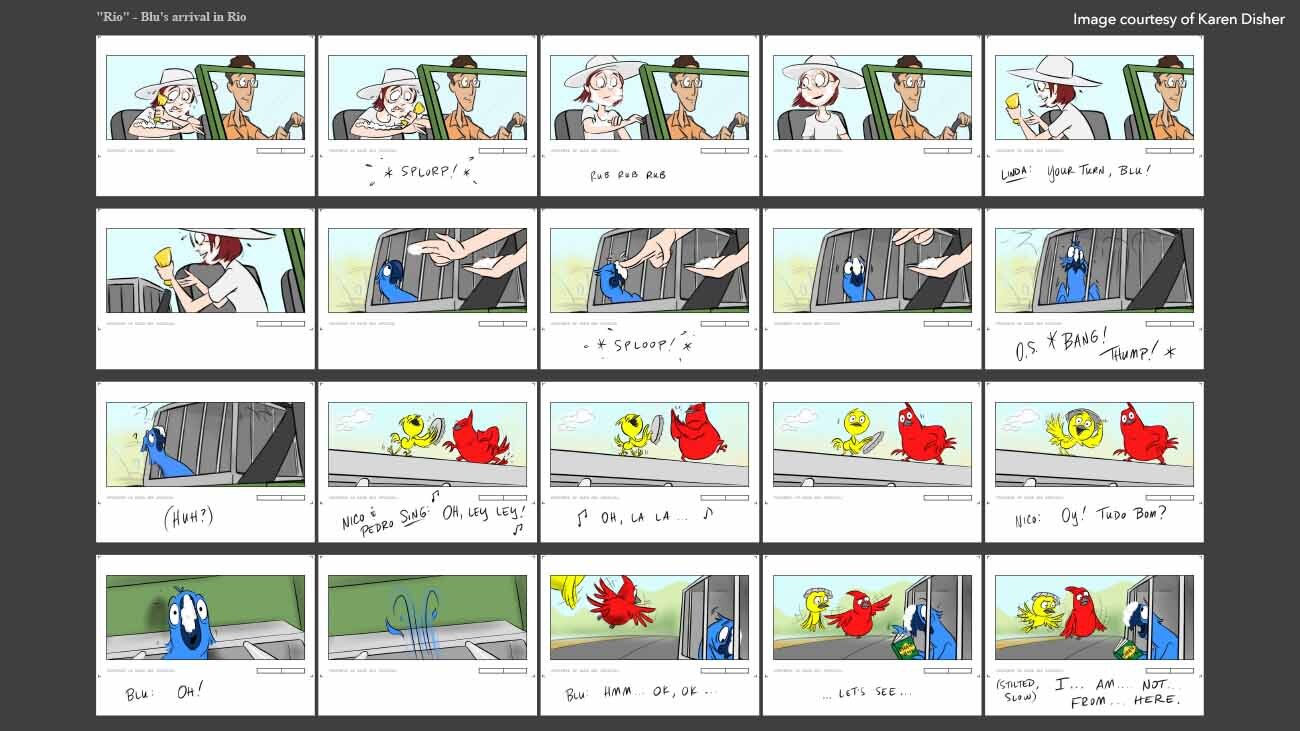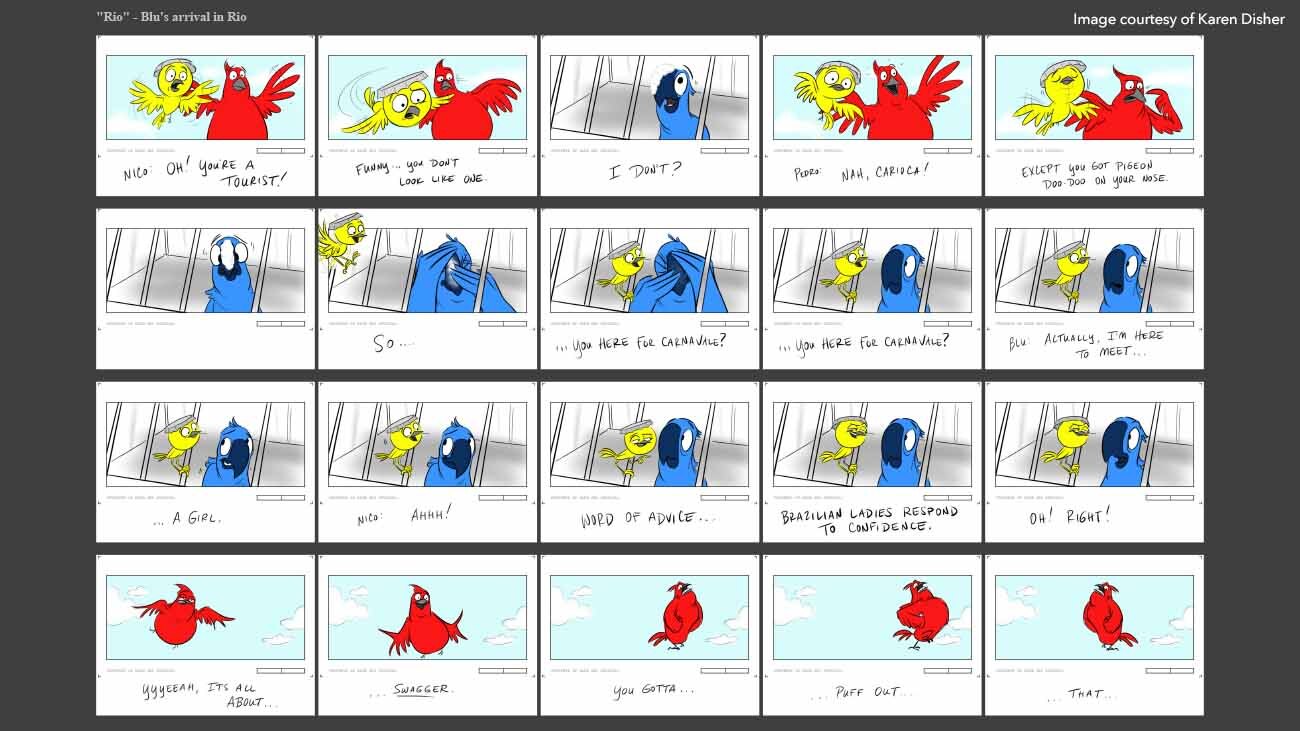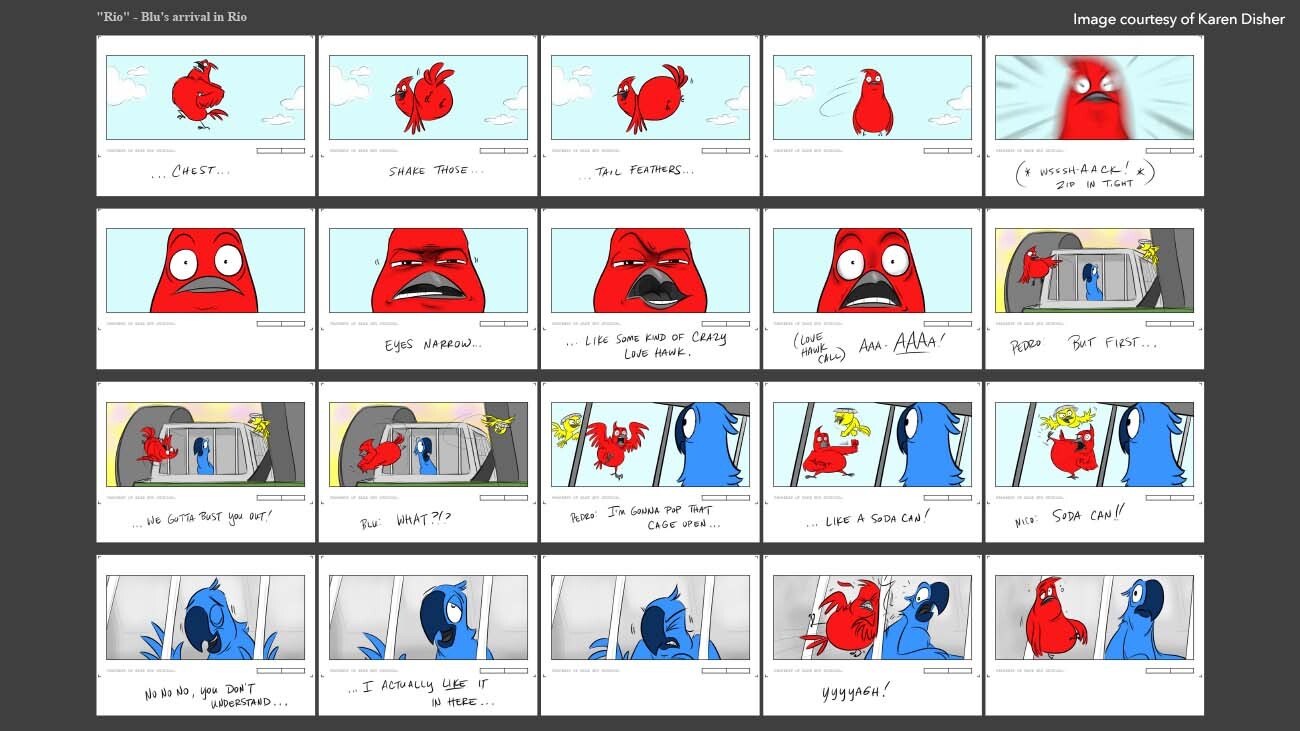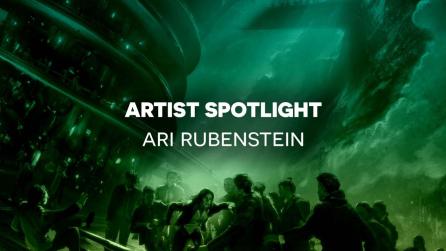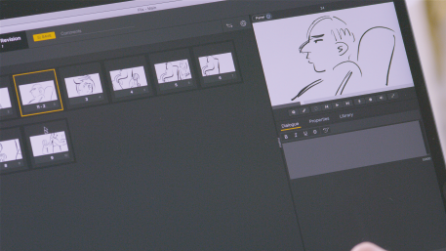When an artist's passion becomes our escape.
When we binge-watch an animation series and deep dive into our comfort zone, temporarily leaving behind our mundane day-to-day lives or to share some laughs watching a family film, we hardly ever think about the artists behind the shows. We focus on whatever we relate to and makes us feel something. But what goes through an artist’s mind when they create a story? What’s their purpose? It seems like sharing laughs connects us more than we thought, as Karen Disher, Story Artist and Creative Director, tells us: ”That’s what got me into animation in the first place—I always loved drawing stuff to crack myself up.”
Karen studied 2D animation at NYU’s Tisch School of the Arts, before getting her first job as a Junior Layout Cleanup Artist on MTV’s Beavis and Butt-Head. After that, her career went on an upward curve and she started leaving marks in the world of animation through her ludic blueprint. She was a Supervising Director on the popular show Daria and directed both TV movies—yes, you read that right! Karen’s wit and creativity took her to Blue Sky Studios where she worked as a Story Artist on the Academy Award-nominated Ferdinand, the Golden Globe-nominated The Peanuts Movie, and Ice Age: Dawn of the Dinosaurs. Then, she was Head of Story in Rio and directed the Annie Award-nominated Ice Age: A Mammoth Christmas.
Now, she’s a Creative Director at Spire Studios, doing what she does best—creating content that makes us feel something. “The core ‘me’ hasn’t changed that much—I have a hard time resisting putting in gags that make me laugh, even if they might be inappropriate for a family film,” Karen explains. “But I’ve grown to appreciate the art of getting big emotional stories and characters right. It’s more of a challenge than going for a cheap laugh. It’s hard work but so satisfying when you create something that feels deep and real”.
We tried to keep our fanbying at bay and we wanted to get to know better the artist behind all these memorable shows. We also got some wholesome tips for aspiring artists in the animation industry, opened the discussion around what the future of animation holds, and discovered how Flix, our story development tool, supports Karen’s creative process.
Q: What helps you get in ‘the zone’ as an artist before you start sketching?
A: Depends on the task at hand. If I’m thumbnailing out a new sequence, something that takes a lot of thinking and writing, I need a giant cup of coffee and absolute silence. If I’m just drawing—taking those thumbnails and making nice story panels—then I put on music and get into a flow.
When I feel stuck, sometimes I’ll do a reference dive and spend a little time on Google images, looking for art and photos that could help me think of cool shots or environments.
Q: Can you please describe your usual workflow as a Story Artist?
A: I always start with little thumbnails—ballpoint pen on paper. That’s the thinking/writing part and it typically takes a day for a new sequence. Then I’ll spend the next few days working on my tablet to create story panels for editorial.
Q: You’ve worked on many well-known projects, from Daria to Rio. What projects are you most proud of, and why?
A: They were all great in different ways! Beavis and Butt-head was such a massive cultural phenomenon, it was incredible to be a part of that—and I was a huge fan of the show, too. Then Daria had a different kind of impact. It helped people who might have felt like outsiders or a little too smart for this world. I’m most proud of that one in terms of its emotional resonance and how meaningful it was for the viewers.
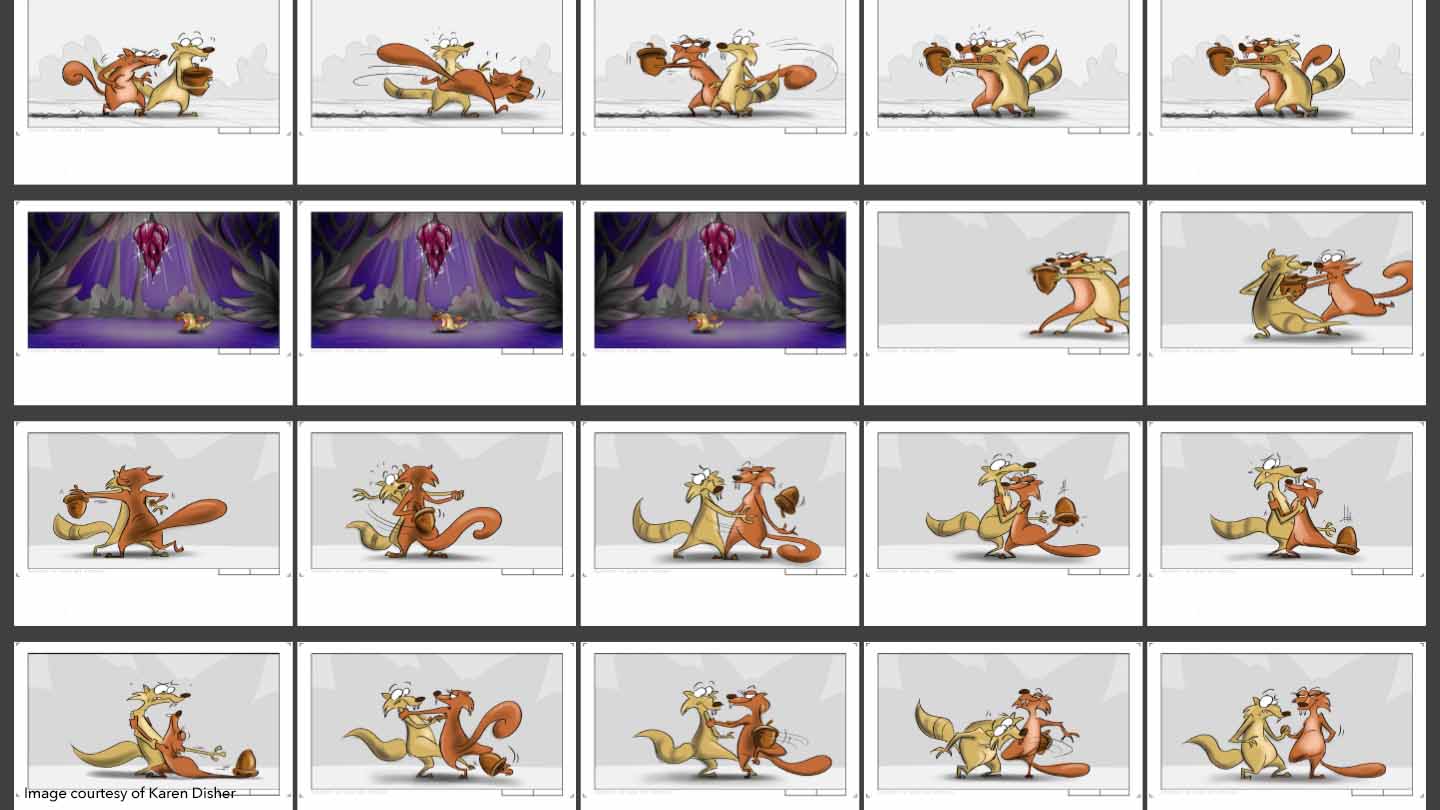
Q: How important is it for aspiring artists to pursue their ideal role from the beginning and not settle for just industry-related roles?
A: It’s going to be different for everyone. I went with what felt right to me at the time, but that might not be the right move for someone else. You have to trust your gut. However, I feel like there are so many studios out there today and so much demand for content that it’s worth going for it if you can.
Start at a small studio if the big guys reject you at first, get your feet wet and learn from the more experienced artists around you. You’ll improve your skills by the mere fact that you’re drawing all day, all week long—small studios are great, by the way! Stay there if you’re happy. The only thing that matters at the end of the day is finding satisfying work with people you like.
And the ‘ideal role’ is not important when you’re first starting out. I was willing to take any art job offered to me, at MTV it happened to be as a Junior Layout Cleanup Artist. During my time there, I ended up doing a lot of different jobs—storyboarding, character design, animating, sheet timing, directing, and supervising. I’m so happy I was able to learn all of those different skills and that can’t happen if you’re fixated on doing just one type of job.
Q: Do you have any wider tips for artists looking to break into the animation industry?
A: I always love seeing portfolios that feel personal, where you get a powerful vibe of what the artist is all about: their humor, sensibility and individuality. There’s nothing more boring for me than looking at page after page of naked people from life drawing class. I’d rather see a bunch of weird, funny unique drawings than the most perfect rendering of an art model. But that’s just me, every studio and director is looking for different things. Which leads to—try not to take rejection personally. I know that is so hard. But try to stay self-aware—know your strengths and weaknesses, know where you shine and where you need to improve. Accept feedback gracefully and don’t give up!
Q: What’s your experience of working at Spire so far? What exciting projects should we look forward to in the near future?
A: Spire has been awesome. It’s my first time working at a start-up and I’m loving the feel of being part of a small, nimble team where everyone rolls up their sleeves and gets the job done, where we all wear a couple of different hats. Our first feature film is called Trouble. It’s been crazy fun to work on, it’s a world like you’ve never seen before. I’m also developing a couple of feature ideas to direct in the future.
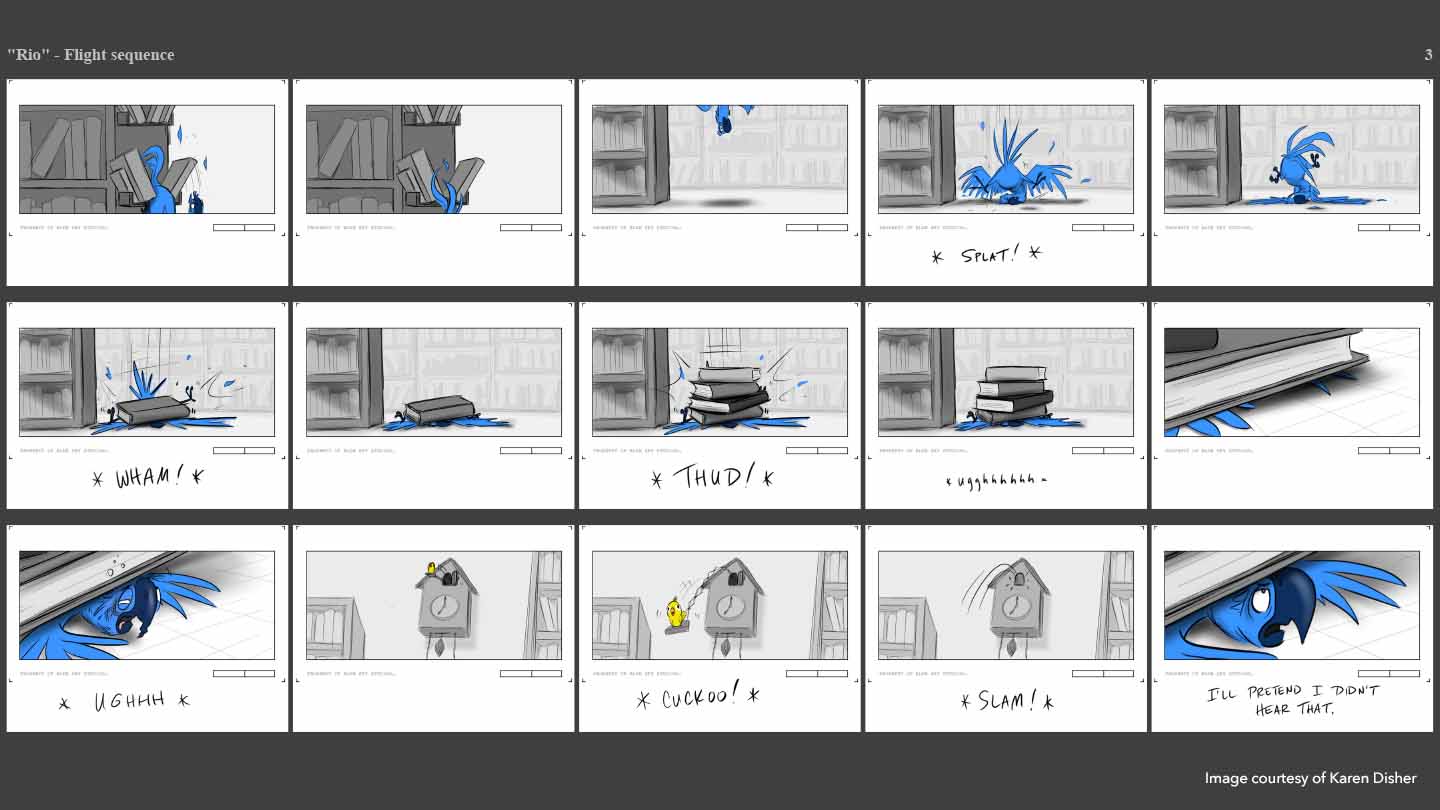
Q: How and when did you start using Flix?
A: This is actually my first experience with Flix. Spire implemented this workflow from the beginning days of the studio.
Q: How did you find the transition to Flix at Spire?
A: There was a bit of a learning curve, not all of us had used Flix before. Luckily, the Flix team has been very responsive and helpful when we’ve run into issues.
Q: How does Flix help you? Do you have a favorite feature of Flix?
A: The most helpful aspect of Flix for me is the ability to easily check out what the other artists on the team are doing. I can peek at anyone’s sequence to make sure our shots are hooking up, or get references for locations and characters, etc. It’s great for collaboration which is vital.
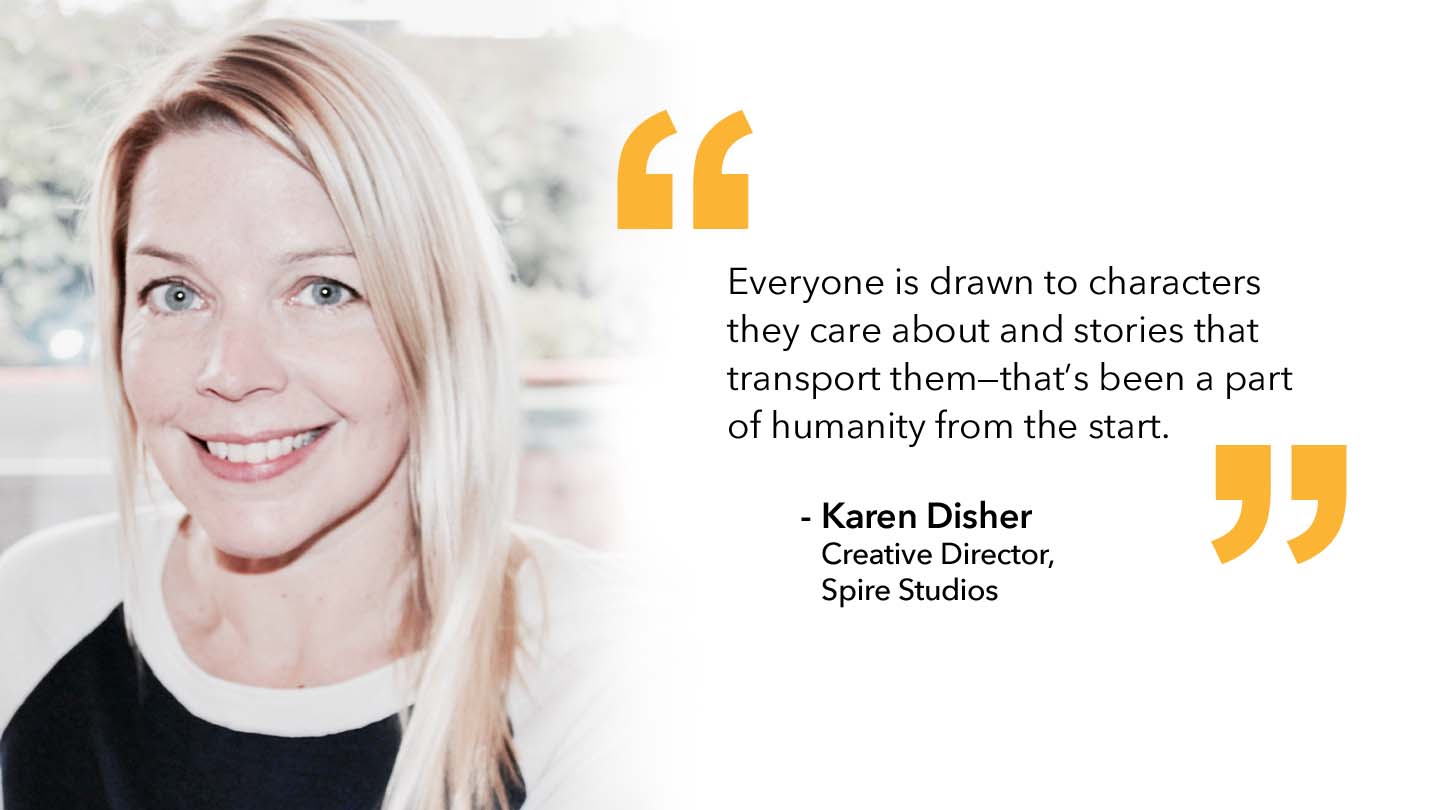
Q: With the rise of social media and multiple streaming platforms, did the audiences’ expectations of animated feature films and animated series change since you first started in the industry? How?
A: I don’t think technology has changed what types of shows and movies people want to watch. Families will always want funny, kid-friendly films that the grown-ups can enjoy, too. There will always be huge audiences for adult animation. And, of course, everyone is drawn to characters they care about and stories that transport them—that’s been a part of humanity from the start. The biggest change is that there’s room for so much more variety now. People can pretty safely assume that no matter what their taste is, they can find something that suits them.
Q: What do you see in the future of animation?
A: The industry is going to move more and more into game engine production workflows like we’re using at Spire, which will bring budgets down and allow us to take more creative risks. I’m curious to see where AI takes us, too—what types of cool new imagery and worlds can we create using that technology? That’s what is so amazing about animation, it’s always evolving as an art form and creative medium.
